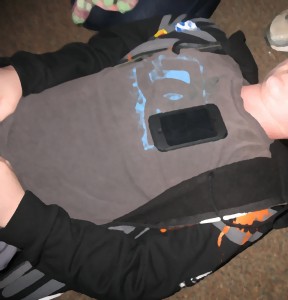
We were working on plate tectonics last week, and the conversation went from earthquakes to heartbeats.
I think it started with the question of, “How do we know what the inside of the Earth is like if no one’s been down to see it?”
I agreed that we’ve not even been down to the bottom of the crust because the heat and pressure would collapse any hole we tried to drill. I did not mention that terrible movie, “The Core”, because beyond maybe the first ten minutes where there is some actual speculative science fiction, it’s really not worth seeing.
But beneath the crust, how do we know how thick the mantle is? How do we know that the inner core is solid metal (mostly iron) while the outer core is liquid metal?
Not wanting to go into too much detail I tried to explain about seismic waves. Different types can go through different materials and if you monitor their reflections off different parts of the Earth’s interior you can puzzle out the layering and composition. I just gave the simplest demonstration: if you tap a piece of wood with you knuckle, could you tell that it was wood and not metal? What if you tapped a bucket, could you tell if it was full of water or not? Well seismic tomography work in much the same way, except that you’re usually picking up the reverberations from the earthquake rather than making it yourself by hitting the bucket. There’s also a bit more math involved.
But tapping the bucket gives a quick easy feel (pun intended) for the process. My students at least seemed satisfied.
So then I pointed out that you could use an app called iSeismo, to detect seismic waves. Both the iPhone (and its variants) and the iPad have accelerometers that can be used to pick up motion in all three dimensions. My students from last year remembered it, and at least one already had it loaded on his phone.
A quick test showed that the phone’s pretty sensitive. You can pick up two people jumping together all the way across the room. This part of the demo is nice because it helps prove that seismic waves from earthquakes can go very far. You can also see the little squiggles as the waves are picked up.
I did not try it this time, and I’ll need to confirm if it will work, but since the time on the phones should be well synchronized over the network, and iSeismo can output the actual data, we should be able to use three iPhones to triangulate the location of the jumpers. This might work in nicely with geometry now that I think about it.

Anyway, finally, a student asked if the phone might be able to pick up his heartbeat if he lay on his back.
We tried it. Lying on his back on the floor while holding his breath, we could see his heartbeat quite clearly.